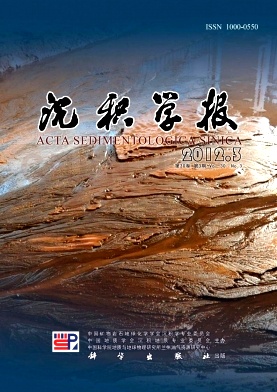Dynamics of Late Paleozoic Pullapart Basin and Its Relationship with Mineralization of Goldpolymetallic Deposits in FengxianTaibai Counties, Shaanxi Province,China
- Publish Date: 2012-06-10
-
Key words:
- pullapart basin /
- basin dynamics /
- tectonic lithofacies /
- hydrothermal sedimentary lithofacies /
- superimposed lithofacies of tectonic hydrothermal fluids /
- /
- /
- /
- /
- /
- /
- /
- /
- /
- /
- /
- /
Abstract: FengxianTaibai sedimentary basin could be the Paleozoic pullapart basin which might be controlled by obliquedirected subduction and collision of the Qinling and Yangtze Plates based on new research methods, i.e., reconstruction and restoration of geotectonicpaleogeographic position and tectonic lithofacies. During the initial stage of the Middle Devonian period, FengxianTaibai sedimentary basin was enclosed and separated by marginal vertical baseuplifting, and dynamics of basin was controlled by four groups of synsedimentary faults, resulted in continual migrations of subsidence and sedimentary centers in the Late Paleozoic basin. During the middle stage of the Middle Devonian period, subsidence and sedimentary centers trending northwestdirected might be located in north part of FengxianTaibai basin while subsidence and sedimentary centers trending northwestdirected shrink in the center part of FengxianTaibai pullapart basin during the Late Devonian period. However, the Carboniferous subsidence and sedimentary centers were migrated from the center to the zones of marginal synfaults of FengxianTaibai pullapart basin, and the Carboniferous to the Early Triassic wedgeshaped sedimentfilling bodies related to zone of the plate subduction and collision was located at the southern part the Shangdan suture in the northern margin of FengxianTaibai pullapart basin. Finally, formation and evolution of FengxianTaibai pullapart basin might have been controlled by the NW, NNE, NS and NWtrending synsedimentary faults in the FengxianTaibai Devonian pullapart basin. The west part of Shangdan, the middle part of LixianFengxianFengzhenShanyang, and the west part of JiujianliangZhenanBanyanzhen synsedimentary faults were of most important controls not only in the formation of the FengxianTaibai Devonian pullapart basin but also in the evolution of the Carboniferous period to the Early Triassic pullapart basin. Tectonic inversion of synsedimentary faults controlled subsidence and sedimentary centers during the evolution of the basin from the Carboniferous period to the Early Triassic period. The FengxianTaibai Paleozoic pullapart basin can be divided into three different level basin based on the study of basin dynamics and tectonic lithofacies. The secondlevel, Fengxian basin is mineralization concentrated area of goldpolymetallic deposits in the west part of FengxianTaibai pullapart basin while the secondlevel, Taibai basin is mineralization concentrated area of gold deposits in the west part of FengxianTaibai pullapart basin. In the thirdlevel, BafangshanYinmushi basin, Bafangshan and Yinmushi polymetallic deposits and Baguamiao gold are the mineralization zoning at the scale of orefield and of deposits, which might be controlled by threelevel basin, synsedimentary faults, hydrothermal sedimentary lithofacies, and superimposed lithofacies of tectonic hydrothermal fluids. In the north and east part of the Paleozoic pullapart basin, formation of gold source beds and preliminary enrichment might be related to albiteite lithofacies and albitehydrothermal sedimentary lithofacies, and they may be superimposed by albitecarbonate breccia and Fedolomitealbite breccia formed by the Carboniferous tectonic hydrothermal fluids while the Triassic hydrothermal cherts and layered dacitic tuffs hosted Carlintype gold deposits in Wenjiangsi area in the south part of the Paleozoic pullapart basin. SEDEXtype leadzinc deposits may mainly related to chertic lithofacies and sideriteferrodolomitite lithofacies.
| Citation: | Dynamics of Late Paleozoic Pullapart Basin and Its Relationship with Mineralization of Goldpolymetallic Deposits in FengxianTaibai Counties, Shaanxi Province,China[J]. Acta Sedimentologica Sinica, 2012, 30(3): 405-421. |






 DownLoad:
DownLoad: